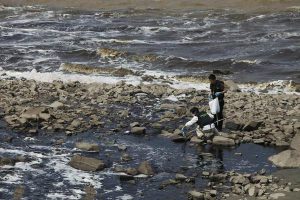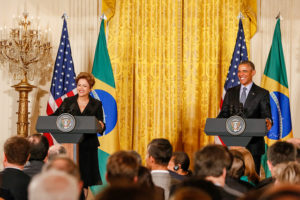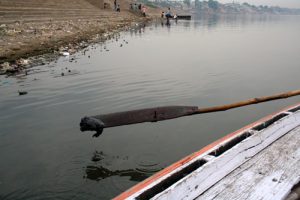It could take up to three years before lawsuits, taken in the public interest, start to populate Chinese courts. So thinks Lin Yanmei, an associate professor at Vermont School of Law and a doctoral student at China University of Politics and Law. Lin, who has a longstanding collaboration with CUPL’s Center for Legal Assistance to Pollution Victims, and has monitored environmental public interest litigation in China, tells chinadialogue the reasons why few public interest cases are likely to be taken soon.
chinadialogue (CD): The expected flood of environmental public interest cases hasn’t appeared. Why not?
Lin Yanmei (LYM) Bringing these cases requires that NGOs have the
required capacity and expertise. Early figures from the Ministry of Civil Affairs puts the number of qualified NGOs nationwide at more than 700, but that’s an estimate, not an actual list. I’d guess that over 80% of those are academic associations, industry associations, or research groups. Very few are environmental NGOs working on industrial pollution or environmental damage. Between 2007 and 2013 only four NGOs brought public interest cases, and the All-China Environment Federation accounted for 90% of them.
There are four main reasons for the lack of environmental lawsuits. Firstly, NGOs that want to bring cases don’t have experienced environmental lawyers. For most NGOs bringing a case like this for the first time is like eating a crab – you just don’t know where to start. Secondly, many qualified NGOs, particularly those with strong local roots, are still worried: fighting an easy case just to look good would be meaningless; fighting a hard one would put them under a lot of pressure and not necessarily solve anything. So they’re waiting to see what happens.
Thirdly, many local courts haven’t set up the necessary environmental and resource tribunals and aren’t familiar with the new system. Finally, the judicial system is often subject to interference by local governments, which generally prioritise economic growth. Between 2007 and 2014, more than half of the defendants in environmental public interest cases had been found guilty in criminal trials. And that’s the problem – without those prior convictions it would be next to impossible to use the civil courts to challenge a big local taxpayer.
CD: What stage do you think China’s environmental public interest litigation is at?
LYM: Currently the legal framework is there, but the necessary mechanisms aren’t yet in place.
One of the main problems isn’t just the lack of clear rules on who can bring this type of litigation, its even more uncertain who can be sued. An interpretation by the Supreme People’s Court in January didn’t deliver a definition of what a ‘polluter’ is. For example, if hazardous waste is polluting soil and water, who is responsible? The manufacturing firm which produced the waste? The company or individual that transported it, processed it, or unloaded it? Are they responsible for removing the pollution, long or short term restoration, and paying compensation? None of this is clear.
Also, are companies that breach emissions limits ‘polluters’? How many violations have to be committed before they are considered to have damaged the public interest? Can the amount of money saved by the polluting company be used to set levels of compensation? Again, there are no clear answers to these questions.
The outcome of the Taizhou case was widely hailed, as six companies last December
were fined a total of 160 million yuan for polluting local rivers. But it was a special case not easily repeated. The plaintiff, Taizhou Environmental Federation, has government links and seems to have been set up specifically to bring this case; the head of the Jiangsu provincial court himself acted as the chief judge; and only six companies of many implicated were sued. Friends of Nature tried to sue another three, but were refused. And 60% of the compensation was paid into a special account at the Taizhou Environmental Welfare Fund – and there’s a big question mark over how that money will be used.
Environmental litigation mechanisms will only take shape if many administrative and judicial reforms are implemented. That process could take three years, after which the number of cases will increase, with NGOs, lawyers and the courts all more capable. So there’s going to be a three year period of working things out.
CD: How will environmental civil public interest litigation develop?
LYM: The most basic thing is to have people trust the system, like with openness of information. For example there’s a degree of faith in the transparency of what we have already. There are cases in Yunnan where information hasn’t been divulged, or applications for its release have been refused. But when administrative redress is sought it is then released, or at the least there’s a response.
This is because everyone, from the body holding the information to the public, realises that openness of information is inevitable, that it’s unreasonable not to release it. But that’s not the case with environmental litigation, and that kind of trust needs to be built up. Some cases aren’t accepted by the courts, while some are but don’t get a hearing, or do get a hearing but are unsuccessful, which de-motivates some NGOs from taking cases.
CD: The idea of laws to protect the environment came from the US. How do the US and China differ when it comes to environmental litigation?
LYM: In the US there are two types of litigation – citizen enforcement suits, which can be brought against ‘polluters’ in breach of pollution permits, or that don’t have permits, and are also known as preventative litigation. There are only 100 of these a year. And there are cases where the government hands out punishments. Once that has happened it’s no longer possible to bring a case, and there’s still only 300 or 400 of these a year.
But compared with China, bringing a case in the US is cheaper, the processes are simpler, evidence is more straightforward, and methods of redress are very clear. There are also mechanisms for giving notice of intent to sue, equivalent to an application for the law be enforced.
The other type of civil case on environmental damage or pollution is brought by Environmental Protection Agency or the body entrusted with management of natural resources – such as the Department of the Interior and state governments – requesting the responsible party clean up and restore the damage and pay compensation for damage to natural resources.
Unlike in China, in the US ownership of natural resources is very clear. Forests and rivers are either public (owned by federal or state government) or private, and that’s the case for everything, so in the US the owner of natural resources has the right to bring litigation. It’s different in China, as even within one nature reserve the rivers and forests belong to different authorities, while ownership of groundwater and mineral resources is also divided. Even if environmental NGOs request that a court orders a restoration, it’s unclear how that litigation should proceed or any punishment be enforced.







